Memory Frequency Scaling on Intel's Skull Canyon NUC - An Investigation
by Ganesh T S on August 29, 2016 8:00 AM ESTGPU and Gaming Benchmarks
Our next focus is on GPU-centric workloads. The full benchmark numbers are presented below, but the overall performance trends are similar to what we observed in the CPU benchmarks section. Even the gaming benchmarks across all kits had similar results. That said, the OpenCL accelerated Agisoft Photoscan Benchmark does show major performance improvements (around 4.5% in moving from 2133 MHz to 2400 MHz, and, around 15% in moving from 2400 MHz to 3067 MHz) with increasing memory frequency. This shows that real-life workloads that can take advantage of the higher memory frequency SODIMMs do exist, but, they are just not that common.
Futuremark 3DMark 11 and 3DMark 2013





3D Rendering with OpenGL - CINEBENCH R15

Agisoft Photoscan Benchmark with OpenCL Acceleration

Gaming - Sleeping Dogs
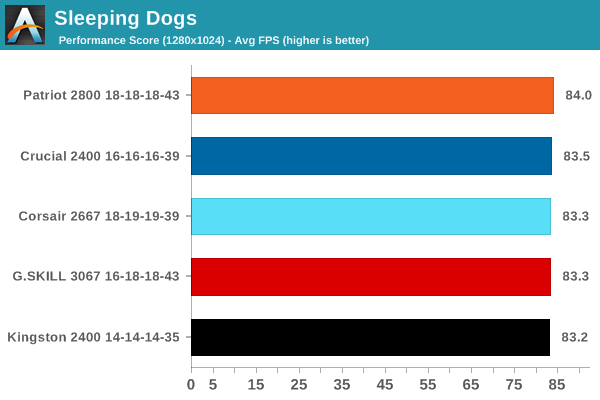
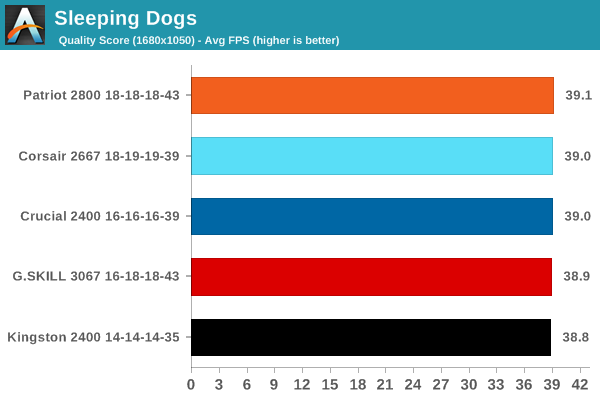
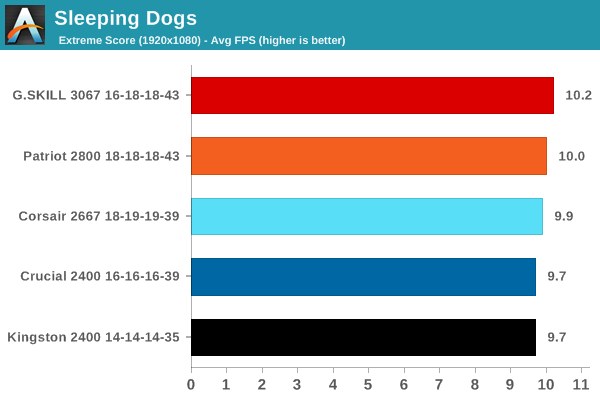
Gaming - Bioshock Infinite
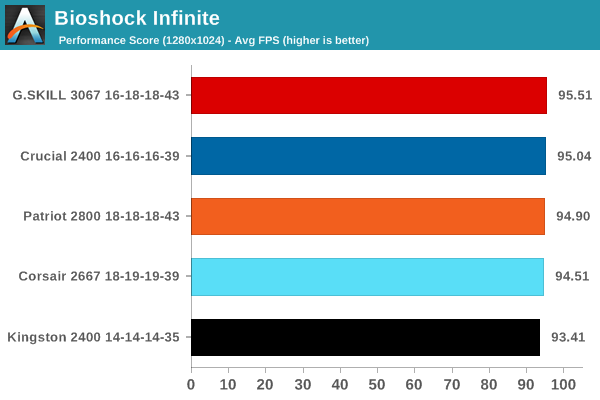
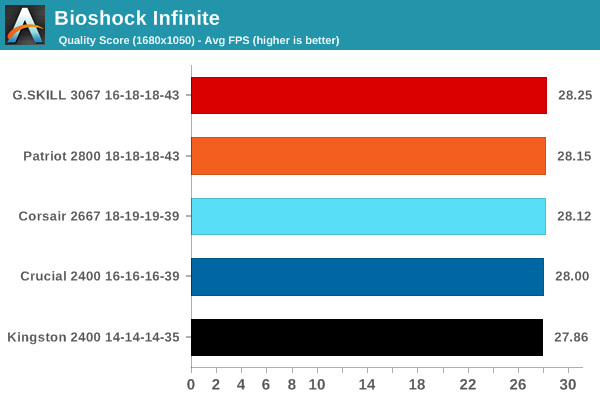
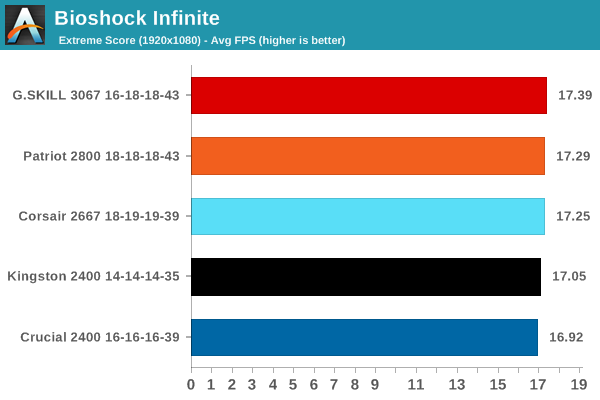
Gaming - Tomb Raider
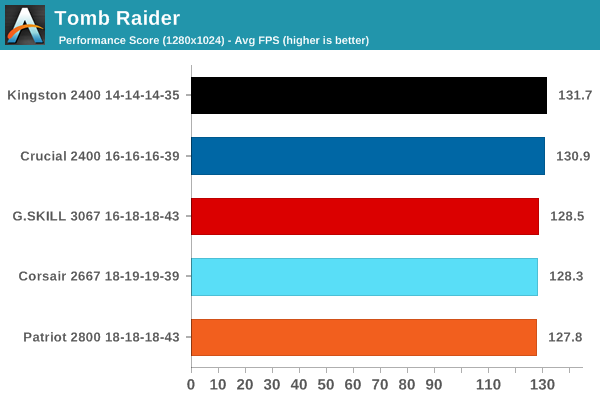
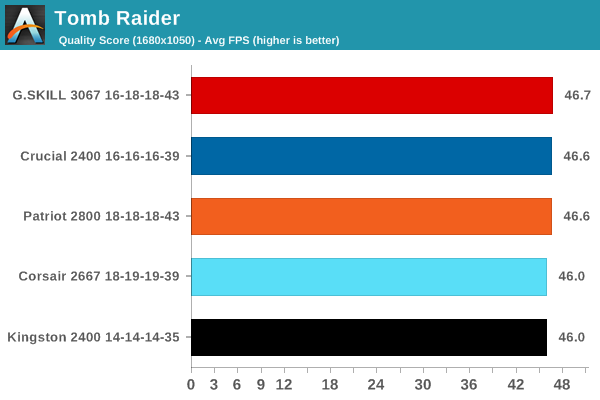
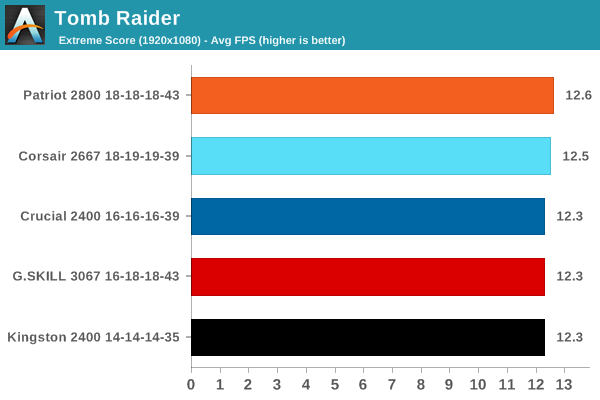
Gaming - DiRT Showdown
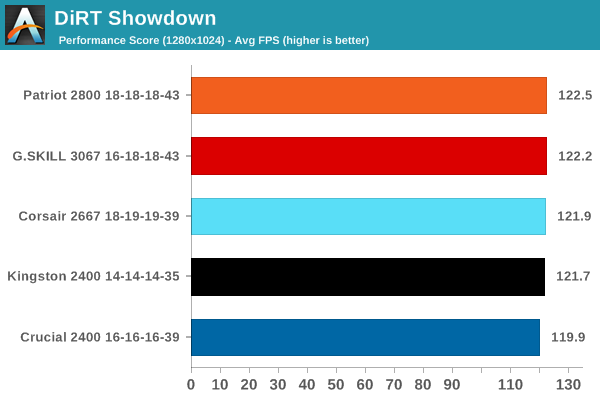
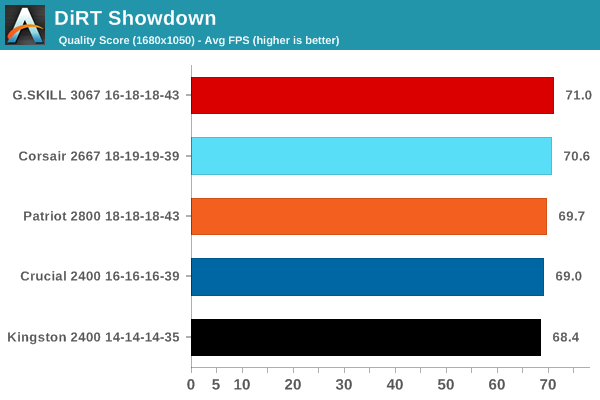
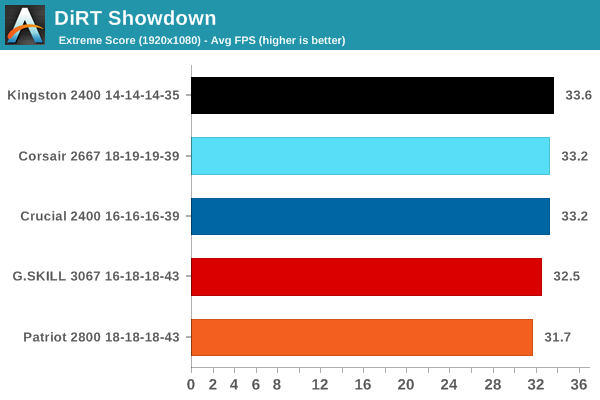
Gaming - GRID Autosport
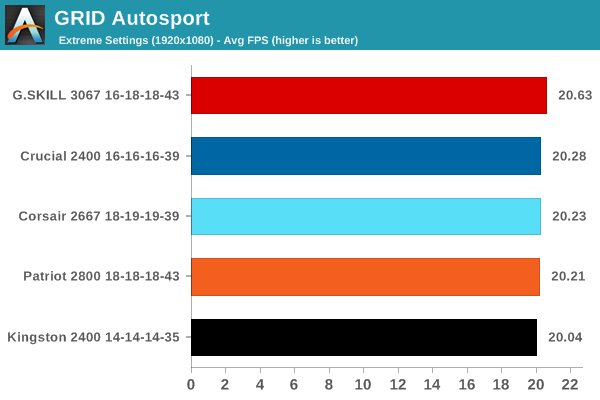
Gaming - The Talos Principle
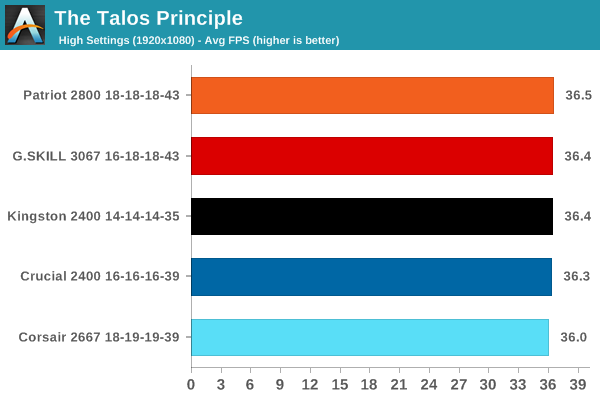
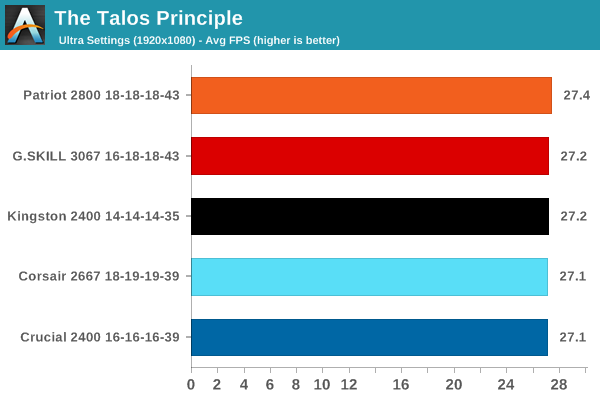










31 Comments
View All Comments
alacard - Monday, August 29, 2016 - link
I always find these kinds of articles funny, especially coming from Anandtech. When you test an SSD you test multi-tasking performance (your destroyer benchmarks), but you don't bother to do so with memory, even tho like an SSD, multi-tasking performance it's the only metric that actually matters.Just like RAM, take 50 different SSDs and run application startup and game loading tests on them and you will get almost exactly the same results across the board, and THIS IS WHY YOU HAVE A MULTI-TASK BENCHAMRK, because without seeing how the SSD can handle varied workloads the results are MEANINGLESS because at a baseline of loading single applications, SSDs are practically all the same.
It works the same with RAM. A user typically spends more time multi-tasking than running one thing, but you don't even bother testing multi-tasking performance on faster memory. What the hell is going on here? How many more of these useless articles are you guys going to keep churning out before you start actually investigating the true differences between RAM speeds and latency with meaningful benchmarks that will actually show the difference?
ganeshts - Monday, August 29, 2016 - link
Previous memory scaling reviews that have been linked above by Ian show that various SINGLE application workloads can benefit immensely from memory frequency scaling. Our intention here was to show that this is NOT the case with the Skull Canyon NUC. The numbers also point to the effectiveness of the eDRAM as a cache for all the components of the processor, and not just the GPU. In that, I believe the review has provided a definitive answer to comments like these : http://www.anandtech.com/comments/10343/the-intel-... ; Many people expected to get better gaming bench numbers with higher frequency memory in the Skull Canyon NUC, and I hope this article was able to resolve their doubts and helped them in choosing the right memory for their system.Second, when it comes to multi-tasking - higher capacity memory will ensure that applications will not swap out and will be readily available for resumption. In our evaluation, all SODIMMs are 32GB in capacity, and that is not a factor. In addition, DRAM is not like a SSD where we have a controller trying to manage wear levelling and other similar tasks.
Multi-tasking, when it comes to DRAM, is not a set of 'parallel accesses' that can benefit directly from faster memory. Any performance benefit that is obtained is when pressure on the caches causes evictions and the new data needs to be fetched in. I would imagine a proper large-sized real-life workload can cause a similar 'access trace' to the main memory (a full-length PCMark 8 workload would probably be the same as 7-Zip and mplayer active at the same time). In the Skull Canyon NUC, we also have the 128MB eDRAM to be rendered 'ineffective' - i.e, the applications need to even thrash that memory if they have to show better performance with the faster memories.
For what it is worth, the Intel Memory Latency Checker tool has 'multi-tasking' tests in the sense that accesses are simulated from all cores simultaneously. We do have the numbers for those, but, since we believe they are not reflective of the type of workloads for the Skull Canyon NUC, we chose not to publish them. I can upload and link those numbers later tonight.
PetarNL - Monday, August 29, 2016 - link
I suspect that the reason why you hadn't seen much benefit with higher DRAM bandwidths is the TDP limit on the iGPU. The situation might be different with the 65W model of the Iris Pro 580.The Skull Canyon Iris Pro 580 manages only a 10-15% boost over the iGPU in i7 5775c/r, despite having 50% more EU and a generational advantage. I would recommend that you redo this test once you get your hands on a i7 6785r based product.
Flying Aardvark - Wednesday, August 31, 2016 - link
Yes and thanks for following up on that! Literally no one else has. I'm surprised you guys pay that close of attention to the comments. It's a shame that Intel didn't put a little more TLC into Skull Canyon's R&D phase, to ensure every ounce of performance could be pulled out of this chip. But limited to a mere 45watts for the CPU/IGP combined, I suppose this was a likely outcome.There's just so many possible bottlenecks with a tiny system with a low heat/power requirement. Intel may have tightened the noose around the noose around this one just a bit much. A few design tweaks and it could really soar. Looking forward to the Kabylake or Cannonlake update.
Senti - Monday, August 29, 2016 - link
Just a note about how much memory progressed, including the worth of "premium" kits.The result of the same Intel Memory Latency Checker on my quite ancient i7-930 with overclocked to 1686MHz, no-name, no radiators and even mixed model (one set of chips made by Samsung, the other Hyundai) DDR3 memory:
Latency: 43.8
1:1 Reads-Writes BW: 29805.4.
Yes, it's triple-channel, but it doesn't help latency at all and even BW difference isn't great from what I remember testing it in dual-channel mode.
evilspoons - Monday, August 29, 2016 - link
At a cursory glance of the benchmarks (without doing statistical analysis on them, I mean) I'd say they tie so often it's irrelevant except occasionally the Patriot 2800 kit falls behind more than any of the other kits do. On the final page, I noticed it has the worst as-tested tRFC, tied-for-worst tRAS and tCL, and middle of the road everything else. Nothing to see here, move along!mr. president - Tuesday, August 30, 2016 - link
Any word on the performance cliff going from 1280x1024 to 1680x1050? Is that eDRAM in action or just different detail settings?1680x1050 is only around 30% more pixels. It's strange to see such non-linear scaling.
ganeshts - Tuesday, August 30, 2016 - link
They have different detail settings - usually, higher the resolution, the more the details.Similar trends have been observed in other gaming PCs also.
FlyingAarvark - Wednesday, August 31, 2016 - link
I'd have to disagree that the 128MB L4 is the reason the RAM doesn't matter. It's (45W) TDP starved foremost, once that's cleared up the RAM will come into play.While definitely a less than ideal setup being so power starved, I'm convinced to buy a Skull Canyon. Then wait for the 10nm update- things are getting interesting in nukeland.
Just a great little machine. Especially now that the last number of years I've backed off FPS/graphically intensive gaming. You can only play those so many decades when you started with Wolfenstein 3D. For League of Legends and probably some Hearthstone this hits the spot.
My nuke will be getting the cheapest RAM option that Crucial sells. :) I really hope Intel invests into these heavily, I'm convinced they're the future of PCs and I'd like to see AMD get into the NUC scene.
Dansolo - Friday, September 2, 2016 - link
The CPU benchmark for Photoscan stage2 seems a little iffy... 2800MHz RAM doing a fair bit better than the 3067 that has better timings? I don't believe that - gotta be something wrong with the test.